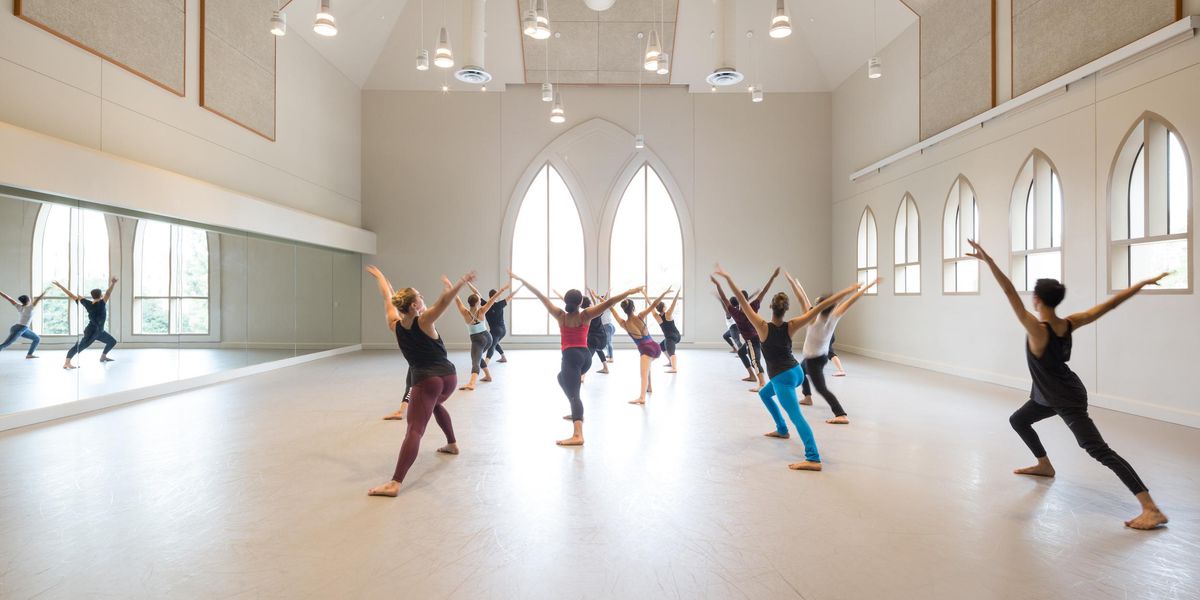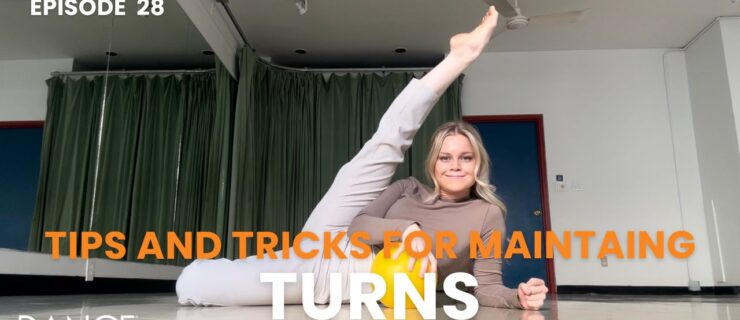Starting Out
These dance program grads made the leap to professional life with persistence, training, and luck.
Some call it tunnel vision. Others speak of good timing. Many describe it as a matter of hedging one’s bets. Bellamy F. Eure’s journey from student at Philadelphia’s University of the Arts to professional dancer with Philadanco involved all of the above. Raised in a business minded family, Eure began weighing her professional options before puberty. At the University of the Arts, where several Philadanco artists teach, Eure came to realize that she was doing more than earning a degree. She was auditioning—over the course of four years—for a company that is salaried 52 weeks a year. Three months after graduating, Eure signed with Philadanco. Her employment strategy worked, but its outcome could have been very different. “If you don’t get the jobs then you don’t go to the [next] auditions,” Eure said of some of her peers. “You get caught up working as a waitress and making money.”
Last November Eure and five other dancers who recently graduated from pre-professional programs across the country discussed how they stayed focused while pursuing a career in dance. Each understood her success as an ability to dance different styles, a capacity for hard work, and a willingness to try anything. “Women are the backbone of the industry,” said Eure, musing about how much more difficult it is for women than for men to break into a dance career. Being the “cream of the crop” at school, she added, doesn’t necessarily translate into a contract for a woman. Networking and presenting a can-do attitude at every class, audition, rehearsal, and coffee break, however, could make the difference between a year marked by exhilaration and one marked by despair.
Peng-Yu Chen graduated from the Conservatory of Dance at SUNY Purchase in May 2003. Born in Taiwan, Chen had one year to find work in the U.S. before her student visa expired. After four years of non-stop study—which included performing in every major production, learning English, and receiving a certificate in arts management—the clock was ticking. She needed to find an organization to sponsor her work visa. “OK,” Chen remembers saying, “I’m going to try anything.” Soon after graduating she was accepted into the Stephen Petronio Company, and she was also asked to perform in the first tour of Twyla Tharp’s Movin’ Out. But when both choreographers learned that Chen needed visa sponsorship—which requires filing extensive paperwork with both governments followed by an undetermined waiting period—the job offers evaporated.
Despite spending the summer dancing in Doug Varone’s Rite of Spring at the Metropolitan Opera House and in Kevin Wynn’s work at the Lincoln Center Out-of-Doors Festival, Chen thought about going home. In September Chen’s boyfriend began dancing with American Repertory Ballet in Princeton, New Jersey. When an ARB dancer injured herself, the 5’2″ Chen was asked to fill in. “I never imagined myself in a ballet company,” said Chen, whose introduction to pointe only began at Purchase. In March 2004, artistic director Graham Lustig gave her a contract—and a promise of visa sponsorship. After performing on pointe in contemporary and classical roles for the past two years, Chen said, “The body can do so many things that you never expected.”
Lyndy Franklin expected, after graduating from Oklahoma City University’s School of American Dance and Arts Management, that her professional life would include a fair share of rejection. “I was prepared that not every single audition would turn into a job,” said Franklin, who knows that each experience is a building block. Franklin developed this attitude at OCU, where she was graded in mock auditions in commercial dance and taught how to budget her money in an economics class for performing artists. “OCU teaches you how to do it all,” said Franklin.
After graduating, Franklin spent a year on the Fosse tour. Then she moved to New York and began auditioning. When Radio City’s annual call for dancers came up, Franklin was ready. The Christmas Spectacular’s directors liked her versatility, which includes singing and pointe work. Competing against about 500 dancers, Franklin landed a position in the Radio City ensemble, a job that comes with an annual three-month contract including health benefits. With the financial stability that the Christmas Spectacular provides, Franklin’s remaining time and energy goes toward auditioning and performing in regional musical theater productions. “Broadway,” she said, “would be a dream.”
Shyamala Moorty’s energies, upon graduating with an MFA from the UCLA Department of World Arts and Cultures, were directed towards a position in academia. That year she applied to job openings for a university dance department position in California. Soon afterwards the state imposed drastic budget cuts that wiped out Moorty’s hopes for job possibilities. Moorty refocused and premiered RISE, a performance-art piece kindled by the 2002 riots between Hindus and Muslims in India.
Currently Moorty, whose father was born in India, is expanding RISE from 20 minutes to an hour-long production. Her success as a politically conscious artist has given her a stronger profile in academic circles. Moorty teaches a core course at her alma mater on the intersection between performance and race. She also teaches world dance to public school children. “Teaching is my bread and butter,” Moorty said. As for expanding her notion of dance beyond ballet, she credits UCLA, which offered her an introduction to Bharata Natyam. “This program,” Moorty said, “attracts people who are looking for something different.”
Unlike UCLA, North Carolina School of the Arts attracts students seeking careers in established ballet or modern dance companies. In 2003, Allison Miller, who previously trained at St. Petersburg’s Studio of Classical Ballet in Florida, was looking forward to finishing her high school degree at NCSA, when she got an offer she could not refuse. The American Ballet Theatre Studio Company presented her with a contract. Miller’s express-lane journey to the professional world involved finishing her high school degree through a correspondence course and growing up quickly. “Damn, it’s so different than school,” said the dancer by phone from California, where she was preparing to dance multiple roles in Ballet Pacifica’s Nutcracker. Differences between school life and the professional dance world continue to floor Miller. “You look behind you,” she said of a class at ABT’s headquarters, “and there’s Paloma [Herrera]. It’s very intimidating!”
Juilliard student Kristen Elizabeth Weiser felt equally knocked out when she saw her first performance of the Cedar Lake Ensemble. Arguably the nation’s best-endowed small company, thanks to its founder’s familial ties to the Wal-Mart fortune, Cedar Lake’s hiring of contemporary ballet choreographers appealed to Weiser, who wanted to perform on pointe. During her last year at Juilliard, Weiser asked Cedar Lake’s then artistic director Lucy Ballard to choreograph her senior project. A few months later, she auditioned and received a contract with the two-year-old company, which is reported to pay a salary commensurate with New York City Ballet’s corps dancers. “It’s a lot easier for me to do an eight-hour day after Juilliard,” said Weiser, who had danced 12-hour days at school. Weiser also credits Juilliard for giving her chutzpah. “When someone tells me to run and jump and fall on my face, I’m up for it.” Then she said, “I don’t see myself leaving here for a really long time.”
Timing. Talent. Calculated choices. A little insanity. All of the above steered these artists into the right jobs after each found what she was looking for—and after each accepted that she was going to have to work like hell to get it.
“You have to take responsibility for your life,” said Bellamy Eure, who credits experience in competitions as giving her a realistic idea of her talent level. Way before graduation day, Eure advises dancers to take a deep breath and ask, “Are you willing to take the risk?” If the answer is yes, then working in the passion-fueled perilous world of professional dance is possible.
Rachel Straus is a freelance writer and an assistant editor at
Dance Magazine.




